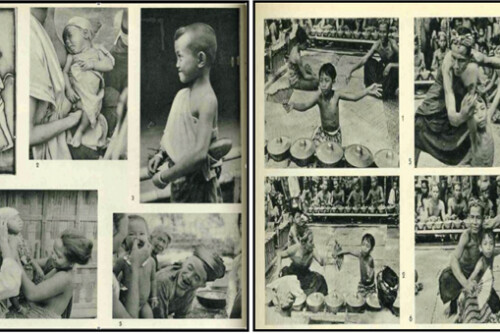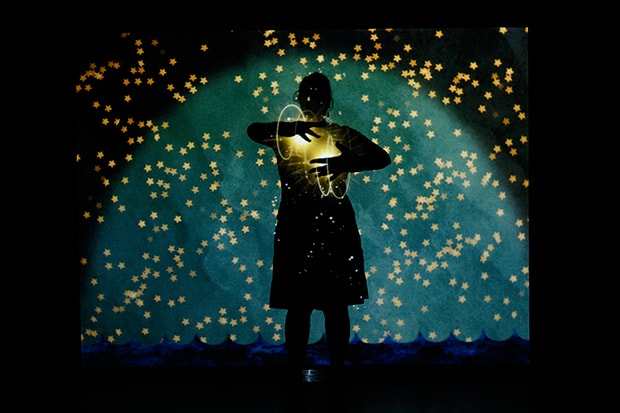Sandoval. Jenkins: Transmedia Activisms
Apparatuses at various levels of worlding: how do we mine the paradoxes of globalization, and of distributed production and being, for activisms? How do we examine such paradoxes as the very conceptual tools that allow for inspections of knowledge and power amid altered agencies not limited to the human? What forms do learning, play, and games take—ironically and pleasurably—as they come to be signs and practices for action? These changes since the nineties across knowledge work, culture crafts and industries, and academic capitalism are something I ambivalently engage as the condition for my own continuing, and for learning that matters.
The Chicana feminist and media theorist Chela Sandoval’s notion of “differential consciousness,” or “differential movement,” is useful here.1 In the book Sandoval spent the restructuring nineties writing, Methodology of the Oppressed, she suggests that globalization processes at that time (and increasingly now) were simultaneously producing both a new (ironically spoken) “democratization of oppression” (what others have sometimes called “hyperoppression”) and a new “global citizen” with emergent forms of subjectivity.2 Such emergent subjectivities create, require, and hone cognitive and other skills. Distributed being and distributed cognition are faceted angles onto and within such subjectivities. Unevenly distributed and suffered inequalities are others.
Back to back with Sandoval’s differential movement are the very specific culture-industry materializations of transmedia following the nineties—those highly commercial practices now open for feminist inspection and extension: for example, what University of Santa Cruz media and industry scholar Henry Jenkins calls “transmedia storytelling:”
A transmedia story unfolds across multiple media platforms, with each new text making a distinctive and valuable contribution to the whole. In the ideal form of transmedia storytelling, each medium does what it does best—so that a story might be introduced in a film, expanded through television, novels, and comics; its world might be explored through game play or experienced as an amusement park attraction. Each franchise entry needs to be self-contained so you don’t need to have seen the film to enjoy the game, and vice versa. Any given product is a point of entry into the franchise as a whole. Reading across the media sustains a depth of experience that motivates more consumption …. The economic logic of a horizontally integrated entertainment industry—that is, one where a single company may have roots across all of the different media sectors—dictates the flow of content across media. Different media attract different market niches …. A good transmedia franchise works to attract multiple constituencies by pitching the content somewhat differently in the different media. If there is, however, enough to sustain those different constituencies—and if each work offers fresh experiences—then you can count on a crossover market that will expand the potential gross.3
In these commercial worlds of entertainment, material examples of stacked realities—cascading over various media and technological platforms with differing degrees of interoperability and standardization—tell these “transmedia stories.” Such transmedia storytelling is inevitably commercialized, and indeed arises as a new commercial techno-practice for the sake of distributed funding and production in restructuring economic environments. Technoscientific imaginaries in contemporary culture are material demonstrations of these practices. And not only in commercial worlds of entertainment.
Sandoval’s semiology in Methodology of the Oppressed teaches us how to hone and understand our distributed sensitivities, those affective labors including pleasure, our feelings out among articulated economies for any frisson that might indicate liberatory potential. These are neither celebratory nor easily addressed within the too-often inadvertently essentializing terms of negative critique, instead pressuring us through many rounds of “not”-ing, knotting good faith and uneven trust. These are about wringing edgy possibilities out of the terrors or strange pleasures of mandates for particular skills and survivals under globalization, those collective double binds that distributed structures (inevitably?) produce. And differential movement is also about articulations and apparatus. Transdisciplinarity and posthumanities are properly connected here.
The purpose of the automobile part called a differential is to allow the wheels to move independently when necessary, each in sensitized differences of speed and distance as the motor directs energy to these points of environmental contact. Notice that this sort of differential is a piece within a mechanics of distributed adaptations, and, attached to the poststructuralist valences between “difference” and “différance,” it works for Sandoval to multiply possibilities within recursions. Such a tensely held unity of movement is never entirely “synthesized” and is instead deferred, operating recursively at more than one level of structure and signification at the same time. In other words, it operates independently at particular material points but is never entirely uncoupled or disarticulated; in fact, the term itself moves among transdisciplinarities and worlds:
This method asks practitioners to collectively and strategically distinguish, evaluate, and select tactics, among which may include integrationism, revolutionary action, supremacism, separatism, anarchism, political defense or redefinition of the human, or complete defiance of that category. However different, each tactic is strategically accomplished in order to intervene in and democratically refocus social and psychic powers …. This methodology of emancipation functions as a place-based ecological activism—it works through self-consciously identifying and producing invigorating political and cultural planetary geographies.4
Transmedia activisms have been coming to matter for a while ….
Sandoval’s methodology of the oppressed, a project in semiology and cognitive media, responds to whole ranges of those tricky mapping problems of affiliation and extension and of critique and exploration by working out—specifically for feminisms—dynamic, multidimensional visualizations and transmedia theories, through an ethically augmented and affected cognitive sensorium. She also demonstrates persuasively that all these involve continuities built upon and with “US third world feminisms” of the seventies and eighties, upon and with situated knowledges recast during the nineties as transformative politics of and about globalization, recast during those alterations in knowledge work and culture industries.
This differential or transcontextual movement is a sort of cycling through possibility, through sets of interactive contexts and actions, which Sandoval thus names as the variable and sensitized tactics and ethics of “democratics.” Sandoval draws upon structuralism and poststructuralism to describe and hone “meta-ideologizing,” which “functions both within and against ideology.” “This manipulation of one’s own consciousness through stratified zones of form and meaning requires the desire and the ability to move through one layer of [the signifier/signified/Sign] relationship and into another, ‘artificial,’ or self-consciously manufactured ideology and back again.”5
Sandoval’s own work on differential movement is preemptive and proleptic, sometimes prophetic. Sandoval’s conceptual medium itself is media in pastpresents, a literal infrastructure out of which her analysis of feminist politics emerged. “Convergence culture,” Jenkins’ 2006 title exclaims, “Where old and new media collide.” Such convergence culture is inhabited, says Jenkins, by those “who learn how to play with media, information, visualization, and who live among and produce hypertexted or relational and relative materialities.”6
Academic practices of all kinds are now enlisted as kinds of transmedia storytelling. I call these “Queer Transdisciplinarities,” but not in a move to register them for identity politics, although sometimes they very explicitly and quite properly are, in my own feminist fields of interest and attention. Rather, my point in naming them thus is to watch them “queer the pitch:” they require us to attend to, to learn to be affected by the political economies of knowledge worlds, to how interlinked the economies of entertainment, knowledge laborings, globally restructured academies, governmentalities, and the infrastructures of communication are now. They connect us, too, to the enlistment of surplus populations into global media, and to the labor of pleasure, hooking us into many layers of system, among these neurological and hormonal, sometimes irritable and irritating.
To “play” with our own consciousnesses, to curiously work at the edge of “this is not it,” to learn to be affected in worlding bits, some activated and activating across the tacit and the explicit, feeling out the edges of rules barely perceptible among distributed embodiments, cognitions, and infrastructures—here are creativities needed now among the double binds we find ourselves in. Such complex movements among contradictory processes do not open themselves up for either idealization or disillusionment. Rather forms of good faith feel out ways to work across affiliations as well as within them. Which “we” gathers, locating inside of worlding processes, as elements in reorganizations that “we” matter in, but do not control?
Sandoval reminds us over and over that nothing purges political movement of contradiction, of ironically essentializing tactical critiques, of incorporation into capitalist globalizing processes, or of the othering results of affiliations and attempts at finding the “right” unit of trust. She is known for what amounts to an intersectional meditation for growing (those all-too irritating) boundary objects, inspiring us to work on: “enough strength to confidently commit to a well-defined structure of identity for one hour, day, week, month, year; enough flexibility to self-consciously transform that identity according to the requisites of another oppositional ideological tactic if readings of power’s formation require it; enough grace to recognize alliance with others committed to egalitarian social relations and race, gender, sex, class, and social justice, when their readings of power call for alternative oppositional stands.”7
Transcontexual movement without falling apart—where we participate as the transmedia ecologies, learning. A struggled-after “posthumanities” tasks itself, from the very depths of restructuring, to refocus on many projects of decolonization, antiracist politics, feminist transformation, and sensitized transmedia knowledge practices.
Mass media and burgeoning new media have many demonstrations of transcontexualities to perform for any of “us” moving among knowledge worlds. And political affects come necessarily to shape work now in and around academies, opposing and investing in current budgetary crises and realities, and then thus explosively media- and activist-intensive. In other words, media ecologies are not an area of study only, but the air we breathe, quite as much a part of global ecologies as global warming, if even more ambivalently politically charged and attended to.
Bibliography
- Ahmed, S. (2008). “Open Forum: Imaginary Prohibitions: Some Preliminary Remarks on the Founding Gestures of the ‘New Materialism.'” European Journal of Women’s Studies, 15(1), 23-39.
- Ahmed, S. (2011). Ahmed, Sara, Goldsmiths, University of London Faculty Webpage. Retrieved 7 Sept, 2011.
- Alaimo, S., & Hekman, S. J. (Eds.) (2008). Material Feminisms. Bloomington: Indiana.
- Barad, K. (2008 [2003]). “Posthumanist Performativity: Toward an Understanding of How Matter Comes to Matter.” In Alaimo & Hekman, Material Feminisms (pp. 120-154).
- Barad, K. M. (2007). Meeting the Universe Halfway: Quantum Physics and the Entanglement of Matter and Meaning. Durham: Duke.
- Bateson, G. (1972 [1954]). “A Theory of Play and Fantasy.” In Steps to an Ecology of Mind: Collected Essays in Anthropology, Psychiatry, Evolution, and Epistemology (pp. 177-194). San Francisco: Chandler.
- Bateson, G. (1972 [1956]). “Toward a Theory of Schizophrenia.” In Steps to an Ecology of Mind (pp. 201-227).
- Bateson, G. (1972 [1969]). “Double Bind, 1969.” In Steps to an Ecology of Mind (pp. 271-278).
- Bateson, G. (1980). Men are Grass: Metaphor and the World of Mental Process. West Stockbridge: Lindisfarne Press.
- Bateson, N. (2011). An Ecology of Mind, a Daughter’s Portrait of Gregory Bateson. Retrieved 31 Aug, 2011.
- Clarke, A. (2010). “In Memoriam: Susan Leigh Star (1954-2010).” Science, Technology, & Human Values, 35/5: 581-600.
- Despret, V. (2004). “The Body We Care for: Figures of Anthropo-zoo-genesis.” Body & Society, 10 (2-3), 111-134.
- Ferguson, R. A. (2004). Aberrations in Black: Toward a Queer of Color Critique. Minneapolis: Minnesota.
- Further and Higher Education Act (1992). Retrieved 5 Sept 2011.
- Haraway, D. (2011). “SF: Science Fiction, Speculative Fabulation, String Figures, So Far: The Pilgrim Award Speech,” (m4v) delivered by DVD in Lublin, Poland, July 7. Video retrieved 31 Aug 2011.
- Jenkins, H. (2006). Convergence Culture: Where Old and New Media Collide. New York: NYU.
- Keeling, K. (2007). The Witch’s Flight: The Cinematic, the Black Femme, and the Image of Common Sense. Durham: Duke.
- King, K. (2011). “Growing Boundary Objects: Among Transcontextual Feminisms.” Presented to the Science & Justice Working Group, at the conference on “The State of Science & Justice: Conversations in Honor of Susan Leigh Star,” University of California, Santa Cruz, June 2-3. Retrieved from growbobjects.blogspot.com.
- King, K. (Forthcoming). Networked Reenactments: Stories Transdisciplinary Knowledges Tell. Durham: Duke.
- Latour, B. (2004). “How to Talk about the Body? The Normative Dimension of Science Studies.” Body and Society, 10(2/3), 205-229.
- MacArthur Foundation. (2010) Katie Salen discusses Quest to Learn. YouTube Video retrieved 31 Aug 2011.
- Marx, K. (1990 [1863]). Capital (Vol. 1). London: Penguin.
- Parikka, J. (2011). “Archive for the ‘Barad’ Category.” Machinology: Machines, Noise, and Some Media Archaeology. Retrieved 7 Sept, 2011.
- Salen, K., & Zimmerman, E. (2004). Rules of Play: Game Design Fundamentals. Cambridge: MIT.
- Sandoval, C. (2000). Methodology of the Oppressed. Minneapolis: Minnesota.
- Sandoval, C. (2002). “Foreword: AfterBridge: Technologies of Crossing.” In G. E. Anzaldua & A. Keating (Eds.), this bridge we call home: radical visions for transformation (pp. 21-26): Routledge.
- Slaughter, S., & Leslie, L. L. (1997). Academic Capitalism: Politics, Policies, and the Entrepreneurial University. Baltimore: Johns Hopkins.
- Slaughter, S., & Rhoades, G. (2004). Academic Capitalism and the New Economy: Markets, State, and Higher Education. Baltimore: Johns Hopkins.
- Star, S. L. (Ed.) (1995). Introduction to Ecologies of Knowledge: Work and Politics in Science and Technology (pp. 1-35). Albany: SUNY.
- Star, L. (2010). “This is Not a Boundary Object: Reflections on the Origin of a Concept.” Science, Technology & Human Values 35/5: 601-617.
- ThirdWorldNewsReel. (1995). A Litany for Survival: The Life and Work of Audre Lorde Trailer. YouTube video retrieved 4 Sept 2011.
- Urton, G., & Brezine, C. (2009). “What is a Khipu.” Khipu Database Project. Retrieved 31 Aug, 2011.
- Undisputed Truth version. “Smiling Faces Sometimes.” YouTube video retrieved 4 Sept 2011.
- Zimmerman, E. (2010). Drift, Architectural Proposal, 2010. Created with Clara Klein & Nathalie Pozzi. Retrieved 31 Aug, 2011.
A transdisciplinizing posthumanities networks across many knowledge worlds. These do not all share the same practices of citation or the same sets of core and cutting-edge literatures. Indeed some ranges of these knowledge worlds are not located in academies. These citations are wormholes into worlds.
- Chela Sandoval, Methodology of the Oppressed (Minneapolis: Minnesota, 2000) 58; 139. [↩]
- Sandoval 2000: 36. [↩]
- Henry Jenkins, Convergence Culture: Where Old and New Media Collide (New York: New York UP, 2006) 95-96. [↩]
- Chela Sandoval, “Foreword: AfterBridge: Technologies of Crossing,” This Bridge We Call Home: Radical Visions for Transformation, eds. G. E. Anzaldua and A. Keating (New York: Routledge, 2002) 20. [↩]
- Sandoval 2000: 110. [↩]
- Jenkins 2006: 129-30. [↩]
- Sandoval 2000: 59. [↩]





